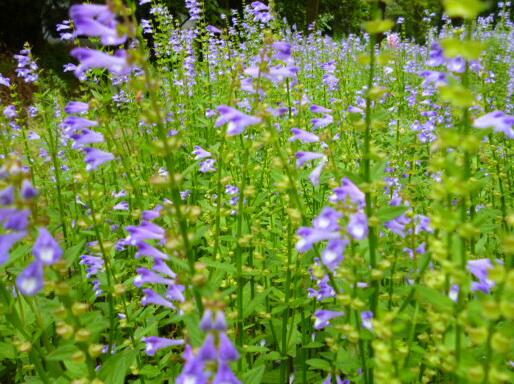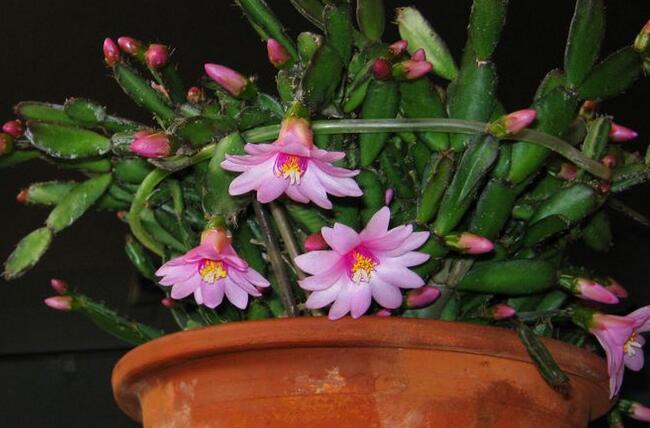What should be paid attention to in the planting method of Scutellaria barbata
Scutellaria barbata is a good beautification and decoration of flowers, its bright and moving colors and beautiful and skilled flowers, used to decorate the bedroom and courtyard is a very good choice. Today, the editor brings you the planting methods and points for attention of Scutellaria barbata. Let's take a look at the details.

The planting method of Scutellaria barbata:
Environment
Like warm, dry, sufficient light environment, drought tolerance, avoid waterlogging, strong adaptability.
Planting
Cuttage culture is the main. The branches were cut off and placed in a shady environment for one day, and then directly inserted into plain sand the next day. After watering, it was easy to take root in a warm environment.
Temperature
Like warm, not cold-resistant, the suitable temperature for growth is 20-30 degrees Celsius.
Light
It is sensitive to light and is a strong positive flower. Do not tolerate shade, high temperature in summer, when the plant growth and flowering period, but also need to give enough sunshine, the plant can bloom luxuriantly and brightly colored.
Watering
Because the fleshy stems and leaves can store water, they have strong drought resistance and can grow and blossom under drier conditions. However, in order to make the plant grow and blossom well, it is also necessary to provide proper water.
Diseases and insect pests
There are diseases and pests such as rust and diamondback moth.
Seedlings overwintering
Every year after the solar terms, Frosts Descent moves the double sunflowers indoors to the sun. After the beginning of winter, put it on the inside of the glass window and let the basin soil dry a bit, so that you can survive the winter safely.
Matters needing attention in culture
Avoid excessive dampness and stagnant water, when it is more than 7 feet, it is easy to cause plant stems and leaves to grow, and even rotten roots to die. When the cold spell comes, it needs to be maintained in the window. Sufficient light is needed throughout the growing period to make the plant grow and blossom normally.
What do you need to pay attention to in planting Scutellaria barbata? Attention to planting Scutellaria barbata
How to plant Scutellaria barbata? Have you mastered all the points for attention in planting Scutellaria barbata? Next, the editor will introduce to you in detail the matters needing attention in the planting of Scutellaria barbata.
Points for attention in planting Scutellaria barbata:
1. Seedlings overwintering: every year Frosts Descent moves the double Scutellaria barbata indoors and shines in the sun after solar terms. After the beginning of winter, put it on the inside of the glass window and let the basin soil dry a bit, so that you can survive the winter safely. After the Qingming Festival the following year, the flowerpot can be placed outside the window. In case of a cold spell, you still need to go into the window for maintenance.
two。 Cutting time: the top of the tender stem of about 5 cm can be cut from the beginning of May to the end of August.
3. Preparation of culture soil: it can be made by mixing 3 parts of pastoral mature soil, 5 parts of yellow sand, 2 parts of rice chaff ash or fine sawdust, and then adding a little calcium superphosphate powder.
4. Planting containers: mud pots, porcelain pots, plastic flowerpots or other containers with water seepage at the bottom. At the bottom of the water seepage pad with tiles, to facilitate water seepage, can be loaded into the culture soil for planting.
5. Cutting method: flatten the culture soil plane in the container, insert the cut lotus twigs into the hole made by bamboo chopsticks, and cultivate the soil no more than 2 cm at most. In order to make the potted flowers take shape and fullness as soon as possible, the size of the flowerpot can be seen in a pot. As long as it can maintain a distance of 2 cm, multiple plants can be cut (when the seedlings are crowded, they can be planted in other pots).
Then pour enough water. New cuttings can be shaded or not shaded, as long as they maintain a certain humidity, they can survive in 10 to 15 days and enter normal maintenance.
6. Peacetime maintenance: Scutellaria barbata has few diseases and insect pests. Usually maintain a certain humidity, semimonthly application of 1/1000 potassium dihydrogen phosphate, can achieve the purpose of large color and blooming. If multiple varieties are cut in one pot and all kinds of flowers bloom in one pot, the appreciation value is higher.
How to plant Scutellaria barbata how to plant Scutellaria barbata and points for attention
Scutellaria barbata may be very familiar to everyone, and it is more common in our lives. Scutellaria barbata flowers are small and delicate, colorful and moving, beautiful flowers, is a very beautiful flower plant, at the same time Scutellaria barbata can also be used as medicine, the medicinal value is also very high. So do you know how Scutellaria barbata is planted?
How to plant Scutellaria barbata
Scutellaria barbata is native to South America, likes the warm and humid climate, and does not have high requirements for soil. Wild Scutellaria barbata is more common in the edge of fields, ditches and roadside damp places. The too dry soil environment is not conducive to the growth of Scutellaria barbata. Generally, after cultivating Scutellaria barbata for 3 or 4 years, the plant begins to senescence and its germination ability weakens, so it must be re-sowed or planted separately.
The seed of Scutellaria barbata is very small and easy to germinate. the life span of the seed is 1 year, and the suitable temperature for germination is 25 ℃. Do not cover the soil on it after sowing, so that the emergence rate will be very low. Even if the seeds germinate, the growth will often stop because the covered soil is too thick and the seedlings cannot be arched out. Prepare a small amount of fine sand when sowing, mix the fine sand with the seeds, and then sprinkle evenly on the soil, do not cover the soil, so as to ensure uniform sowing and neat seedling emergence.
Planting methods and matters needing attention of Scutellaria barbata
1. Environment: like warm, dry, sunny environment, drought tolerance, avoid waterlogging, strong adaptability.
2. Planting: cutting culture is the main method. The branches were cut off and placed in a shady environment for one day, and then directly inserted into plain sand the next day. After watering, it was easy to take root in a warm environment.
3, temperature: like warmth, not cold-resistant, the suitable temperature for growth is 20-30 degrees Celsius.
4. Light: sensitive to light, strong positive flowers. Do not tolerate shade, high temperature in summer, when the plant growth and flowering period, but also need to give enough sunshine, the plant can bloom luxuriantly and brightly colored.
5. Watering: because fleshy stems and leaves can store water, they have strong drought resistance and can grow and blossom under drought conditions. However, in order to make the plant grow and blossom well, it is also necessary to provide proper water.
6. diseases and insect pests: there are diseases and insect pests such as rust and diamondback moth.
7. Precautions: avoid excessive dampness and stagnant water. When it is more than 7 feet, it is easy to cause plant stems and leaves to grow excessively, and even rotten roots to die. When the cold spell comes, it needs to be maintained in the window. Sufficient light is needed throughout the growing period to make the plant grow and blossom normally.
When will Scutellaria barbata be sown
When can Scutellaria barbata be sown? In fact, there is no great restriction on the sowing and reproduction of Scutellaria barbata, which can be sown in spring, summer and autumn. However, when sowing Scutellaria barbata, the main thing is to sow in autumn.
Scutellaria barbata seeds can germinate in about 10 days when they are more than 20 ℃. The growth rate of Scutellaria barbata is also very fast, and the temperature is kept at a high level and will soon be able to blossom. Scutellaria barbata will bear fruit after flowering, and when the fruit is ripe, it will crack. At this time, the seeds should be harvested in time to prevent its seeds from falling into the soil.
Growing environment
Born on the edge of paddy fields, streams or wet grass, below 2000 meters above sea level. Scutellaria barbata likes warm climate and humid, semi-overcast environment. It is better to cultivate sandy loam or humus loam with deep, loose, fertile and well-drained soil. Heavy soil and low-lying plots prone to stagnant water are not suitable for planting. It is often wild near fields or ditches in hilly and flat areas. Like relatively humid environment, too dry areas grow poorly.
The above is the culture technology of Scutellaria barbata summarized by the editor. I hope it will be helpful to you. Scutellaria barbata is a new type of plant that integrates ornamental and medicinal use. it can be made into a potted plant, which can decorate the room or balcony and courtyard.
- Prev

The Propagation method of Scutellaria barbata
The half-branch lotus plant can be up to 55 cm high, with dense clusters, colorful flowers and long flowering period. it is an excellent combination of flowers for decorating grasslands, slopes and roadsides. It is also suitable for planting at the edge of flower beds and flower borders. Potted plants are small and exquisite, and can be displayed in balconies, windowsills, corridors, doors, poolsides and courtyards.
- Next

The cultivation method of falling Flower Dance teaches novice flower friends how to raise it.
The dance of falling flowers is native to southern Brazil and is epiphytic on the trunks and branches of the subtropical jungle. It likes a warm, humid semi-shaded environment, shading and ventilation in summer, and keeping room temperature above 10 ℃ in winter with plenty of light. How to raise the dance of falling flowers? The following editor brings you the culture method of falling flower dance.
Related
- Fuxing push coffee new agricultural production and marketing class: lack of small-scale processing plants
- Jujube rice field leisure farm deep ploughing Yilan for five years to create a space for organic food and play
- Nongyu Farm-A trial of organic papaya for brave women with advanced technology
- Four points for attention in the prevention and control of diseases and insect pests of edible fungi
- How to add nutrient solution to Edible Fungi
- Is there any good way to control edible fungus mites?
- Open Inoculation Technology of Edible Fungi
- Is there any clever way to use fertilizer for edible fungus in winter?
- What agents are used to kill the pathogens of edible fungi in the mushroom shed?
- Rapid drying of Edible Fungi

